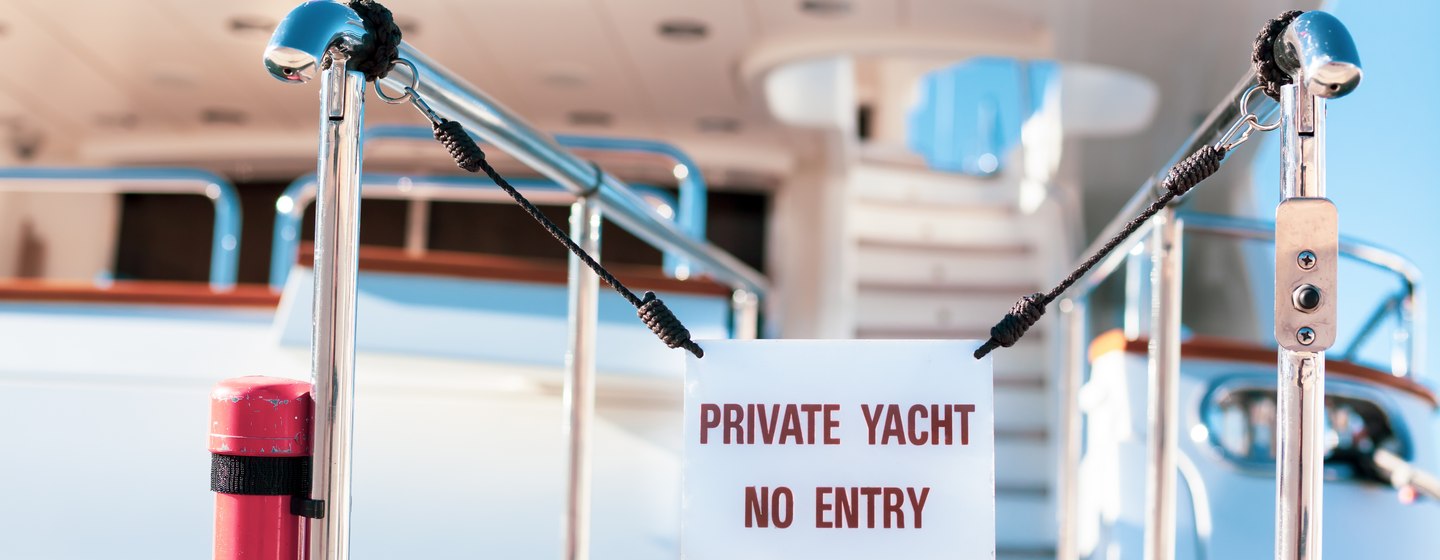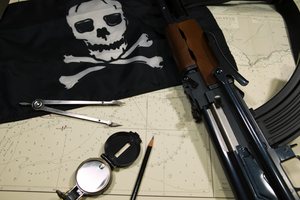For yacht owners and passengers, ensuring the vessel's security is of utmost importance. Open waters, harbors, and marinas present various security threats, including unauthorized boarding and theft. Implementing robust security measures onboard is crucial, especially for the world’s biggest yachts, which are often prime targets for unwanted attention.
This comprehensive guide aims to explore essential security protocols and technologies to enhance the safety and security of your yacht.
Access Control Systems
When it comes to protecting your yacht, one of the first lines of defense is access control systems. These come in all shapes and forms, and range from simple locks and keys to keycards or fobs, and biometric systems. While these measures are often not employed on the vessel themselves, they are an effective way of stopping unauthorized access into certain areas of the marina or harbor, ensuring only those with permission are able to get near your yacht.
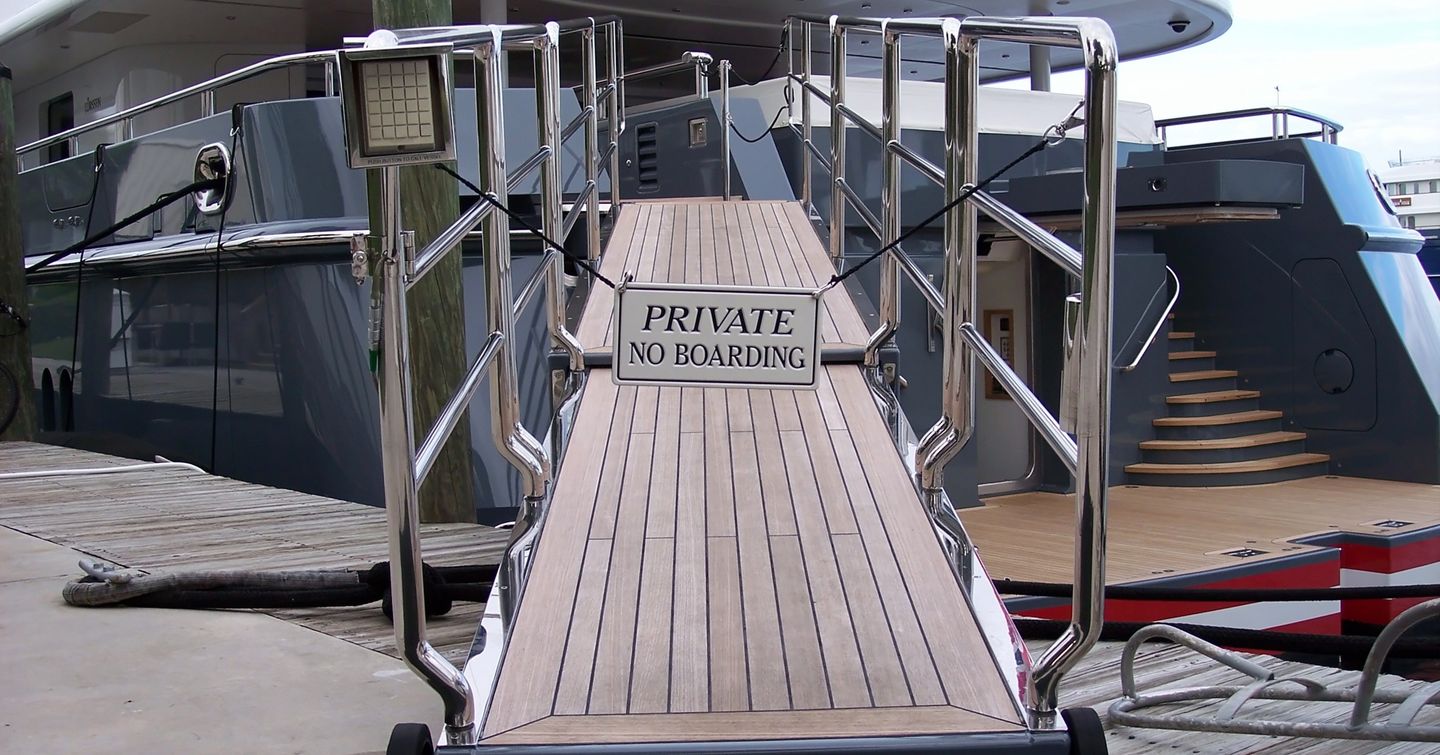
The use of access control systems, however, does not stop there. Simplified versions can also be effective, such as a 'private, no boarding' sign hanging over the passerelle (the platform used to board or leave a yacht). Intercoms are also utilized, meaning those who wish to board the vessel must first ring through to the head of security, the skipper, or the crew to be granted access — or not.
Surveillance and Monitoring
The word 'security' encompasses both the security of those onboard, but also the security of the vessel itself.
CCTV
The installation of CCTV cameras for real-time monitoring of the yacht’s interior and exterior is a cornerstone of maritime security. These surveillance systems provide round-the-clock visual oversight, allowing for immediate detection of any suspicious activity. These systems serve as both a deterrent against intruders, but they also enable the crew to respond promptly to potential security threats.

In addition to protecting you and your guests, CCTV cameras can also be fitted to important areas of the vessels, such as blind spots on deck or in the engine room to ensure the skipper has eyes on all parts of the vessel at all times. The use of CCTV in this application ensures that if a fire were to start in the engine room, for example, the crew can act swiftly before any major damage occurs.
Alarm Systems
Intrusion detection alarms form a critical component of yacht security. These alarms are designed to detect unauthorized entry or abnormal activities and immediately alert the crew or designated authorities. The timely activation of these alarms provides an added layer of security, enabling swift responses to security breaches.
Tracking and Communication Systems
GPS-based tracking and satellite communication systems serve a dual purpose: they allow for precise tracking of a vessel's location, and also provide a reliable means of communication while navigating the seas.
The GPS-based tracking system utilizes satellite technology to accurately pinpoint the yacht's location at any given time. This feature provides real-time location data, ensuring that the vessel's whereabouts are continually monitored. In the event of an emergency or security concern, this technology allows for immediate awareness of the vessel's exact position, aiding in timely responses to potential threats or distress situations.
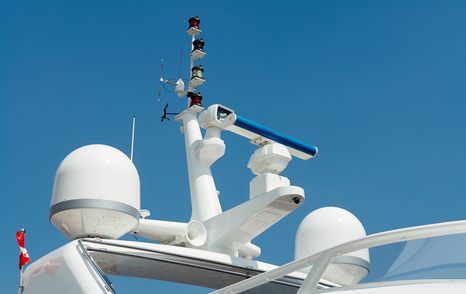
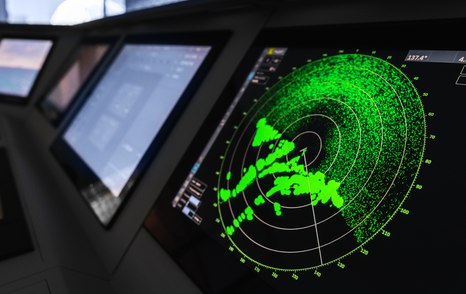
In addition to location tracking, satellite communication systems offer a reliable channel for communication while cruising. These systems enable constant connectivity, facilitating communication with the shore, other vessels, or emergency services regardless of the yacht's location, even in remote or offshore areas. This continuous communication capability is essential for receiving assistance during emergencies, coordinating rescue operations, or seeking aid in case of theft or security breaches.
By integrating these tracking and communication systems into a yacht's security protocols, vessel operators gain enhanced control and preparedness. The swift and accurate tracking of the vessel's position, coupled with reliable communication channels, significantly strengthens the vessel's ability to respond to potential threats or emergencies.
Cybersecurity
Cybersecurity measures aboard yachts are crucial in the digital age to safeguard sensitive data and systems. Protecting onboard networks from cyber threats involves robust measures like firewalls, secure Wi-Fi, and encrypted communication protocols form the initial line of defense. These defenses help prevent unauthorized access, data breaches, and potential cyber attacks, ensuring the safety and privacy of both guests and the vessel's operations.

Moreover, ensuring regular software updates and patches for all connected devices and systems is crucial. This practice helps to mitigate vulnerabilities and reinforce the security infrastructure. Additionally, conducting comprehensive employee training on cybersecurity best practices is vital. Crew members and relevant staff need to be well-informed about the latest threats, how to recognize phishing attempts, and how to respond to potential breaches effectively.
Private Security Team
Private security teams on yachts, particularly on superyachts, serve as a fundamental component of ensuring safety and security while at sea. These specialized teams play a crucial role in protecting the vessel, its occupants, and valuable assets, deploying a range of security measures and expertise to mitigate potential risks and safeguard against threats.

Composed of highly skilled and often extensively trained professionals, these security teams commonly consist of individuals with backgrounds in military, law enforcement, or specialized security services. Their diverse skill sets encompass various security disciplines, including close protection, maritime security, crisis management, and emergency response training. Such expertise equips these teams to handle a wide array of security challenges that might arise during voyages or when at berth.
One of the primary responsibilities of these security teams is to ensure access control on the yacht. They implement and manage access control systems, regulating entry points and monitoring access within the vessel. Their role involves conducting risk assessments, identifying vulnerabilities, and devising security strategies to mitigate potential risks while adhering to maritime regulations and international laws.
Summary
The implementation of a comprehensive suite of security measures is crucial to guaranteeing the safety of everyone aboard a yacht. By strategically incorporating access control systems, surveillance and monitoring technology, tracking and communication systems, and private security teams, yacht owners can markedly bolster security levels. This proactive approach helps to mitigate potential risks, assuring secure and worry-free voyages across open waters and when at the dock.
